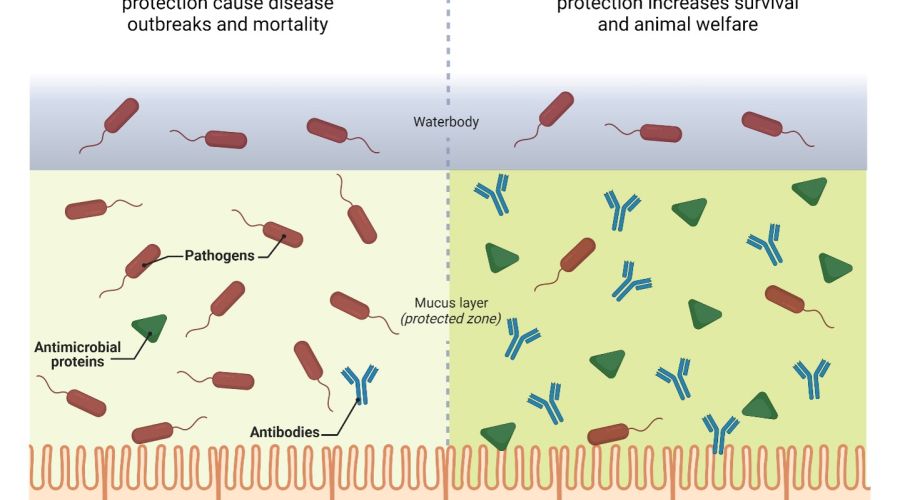Nature's Secret Weapon: How Humic Substances Revolutionize Fish Farming

We're all familiar with the scenario: During flu season, we find ourselves packed into crowded buses and trains, surrounded by coughs and sniffles - and two days later, we're down with the flu ourselves. In fish farming, the story isn't much different. Once a disease outbreak occurs, treatment options become limited, often resorting to medication for the entire fish population. This not only harms the fish and the environment but also poses risks to human health.
Wouldn't it be remarkable if nature already provided a solution for this?
In nature, fish don't swim in crystal-clear water but are exposed to a myriad of natural substances. Among these are humic substances, derived from the decomposition of organic matter, which tint the water brown. Introducing these substances into our aquaculture systems has shown remarkable improvements in key immune markers within the mucus of trout. Special enzymes like lysozyme and alkaline phosphatase found in the mucus act to destroy bacteria, safeguarding the fish. When fish were exposed to water enriched with humic substances, the activity of these defensive enzymes surged by approximately 2 to 3-fold. But that's not all! Immunoglobulins, also known as antibodies, are proteins that bind to pathogens, marking them for destruction. The concentration of mucosal immunoglobulins skyrocketed by an impressive 77%, highlighting the potent immunomodulatory effects of humic substances. Even more impressive was the observed antibacterial efficacy of fish mucus. The inclusion of humic substances aided in reducing bacterial growth of the fish pathogen Yersinia ruckeri by over 75%.
By learning from nature, we are able to transform aquaculture practices to ensure safe food for generations to come.
Detail information can be found in the original paper:
Lieke, T., Stejskal, V., Behrens, S., Steinberg, Ch.E.W., Meinelt, T., 2024. Fulvic acid modulates mucosal immunity in fish skin: Sustainable aquaculture solution or environmental risk factor? Journal of Hazardous Material 467: 133737.
Click here to watch the video.



